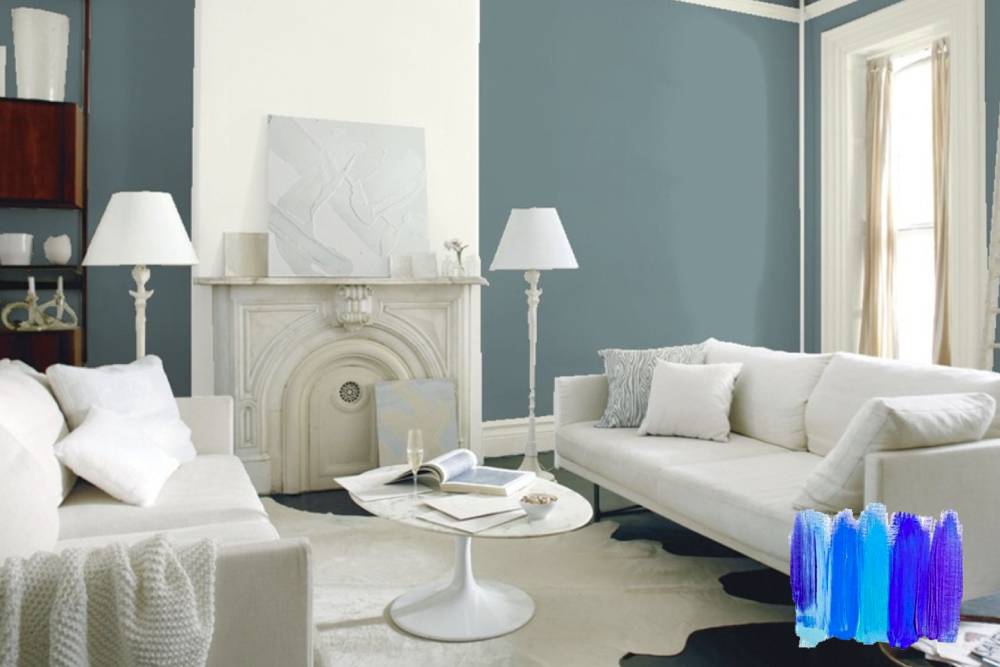The weather’s changing, and so are your tastes. You want to paint your room a soothing blue, your living room an eye-catching yellow, and your kitchen white. You have the paint, the brushes, the rollers, the tape … everything.
But you don’t know how long it’ll take for a single coat of paint to dry.
Why is that important? To have perfectly painted, smudge-proof walls without fingerprint designs, you need to know how fast paint dries.
Unfortunately, there’s no specific answer because paint kinds are affected by pesky things like weather and surface type. So, getting it is going to take some knuckle-cracking. Ready? Let’s dive right in!
2 Types of Paint
Let’s talk about the two types of paint you’re probably going to use when giving your house or furniture a new shine:
1. Water-based Paint
Water-based paints, also known as acrylic paints, use water as a solvent and are used to paint walls and ceilings. They’re easy to use, environmentally friendly, quick to dry and produce low odor.
However, these paints aren’t long-lasting — but that depends on the paint you’re using, such as water-based gloss or satin.
Some water-based paints you may use include:
• Emulsion (silk and matt/flat)
• Satin
• Eggshell
• Gloss, semi-gloss, and high-gloss
2. Oil-based Paint
Oil-based paints, often incorrectly referred to as enamel, use natural oil or paint thinners as solvents and are great at stain-blocking and water-resistant. They’re used for painting furniture, molding, cabinets, steel, iron, etc.
These paints are typically challenging to apply, produce volatile organic compounds that cause headaches, take hours to dry, and turn yellow faster than other paints.
Paint Drying Stages
Now that you know the types of paint you’ll encounter when starting your DIY painting journey, let’s look at the three paint drying stages you need to need an eye on and how long they take:
1. Touch Dry Time
The touch dry time is how long it takes for your first coat of paint to feel dry to your fingers. It depends on the thickness of your paint mix, paint base, painting method (brush, roller, or spray gun), and finish (matt, silk, gloss).
Typically, water-based paints take about 30 to 90 minutes to get touch dry, while oil-based paints take four to eight hours.
2. Recoat Ready Time
The recoat ready time is when you’re going to apply a second layer of paint over your first. It depends on the thickness of your first coat, which can differ if you’re using a:
• Paintbrush – It is thicker.
• Roller – It is thinner.
• Spray Gun – It’s extremely thin.
Typically, the recoat ready time for water-based paints can range between two to six hours. We recommend waiting at least three hours before recoating. For oil-based paints, the recommended waiting time is 16 to 24 hours.
3. Cure Time
The cure time is how long it takes for the paint to dry completely. Curing can take days to weeks. That sounds too long, but it’s necessary because if you shorten the curing process, your paint could crack, become brittle, or break apart.
For water-based paints, the cure time can range between one to four weeks. We recommend waiting at least a week before moving in your furniture. For oil-based paints, the recommended curing time is two to four days, depending on the humidity and temperature levels in the room.
Factors That Affect Paint Drying Time
Several factors affect paint drying times, including:
1. Humidity
Humidity is the amount of moisture present in the air in a room. The higher the humidity level, the longer it will take for your paint to dry. If you live in a perpetually hot area, consider getting a dehumidifier to speed up the paint drying time.
2. Airflow
If you’re painting in a locked room in your basement without any ventilation or airflow, forget about having your paint dry anytime soon. How can you change that? Use a portable fan to facilitate airflow in closed-off rooms.
3. Temperature
Your paint will take longer to dry when it’s extremely hot or cold outside. So, painting during the fall is ideal because the humidity levels are low, and the air is dry.
The Bottom Line
Paint drying is not as complex as it seems, but you still need to follow some rules, or you could end up courting disaster. But once you get the hang of it, it’s all smooth sailing.
However, if you’re new to painting and can’t identify the paint coat on your walls, don’t improvise — you’ll probably end up with peeling walls.
To save yourself the headache, contact the experts. Several painting companies in NYC can help you identify the paint coat on your walls. They may even provide tips for choosing the right colors for your home ! A win-win, we say!

